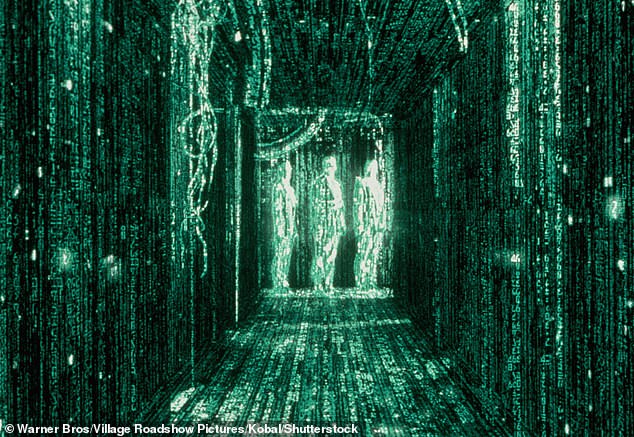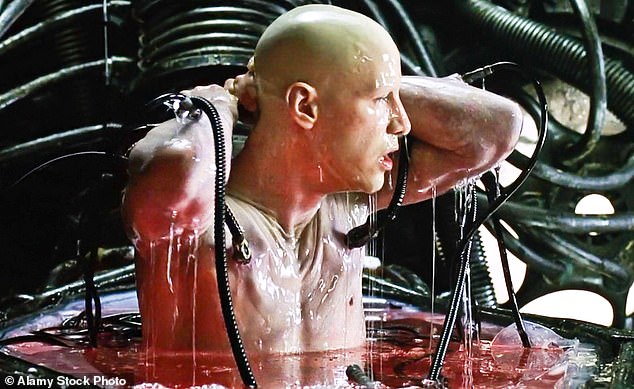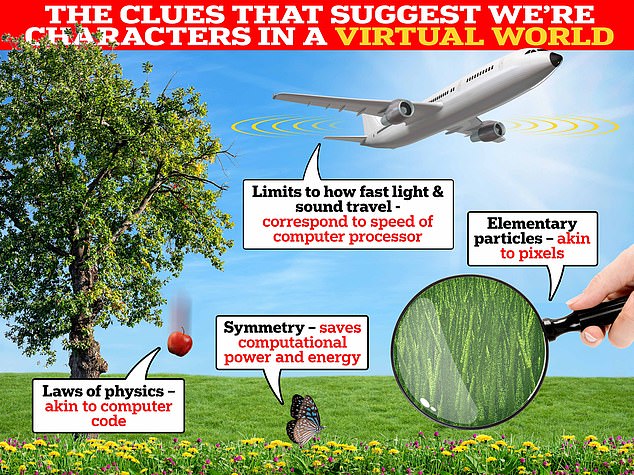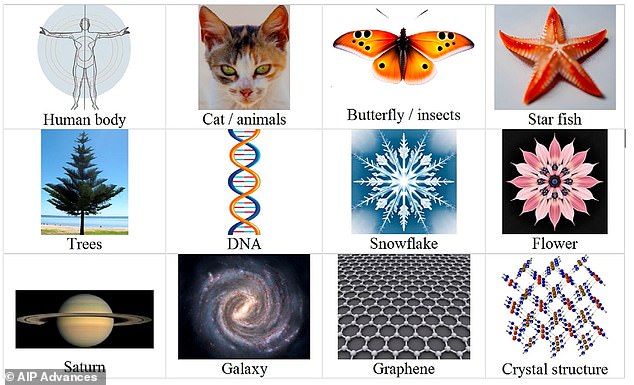Are we living in a simulation? Scientist claims we’re simply characters in an advanced AI world – and says the proof is hidden in the BIBLE
If you feel like you’re living in a convincing virtual reality similar to The Matrix, one scientist thinks you might be right.
Melvin Vopson, associate professor of physics at the University of Portsmouth, claims that our entire universe may be an advanced computer simulation.
And the proof that this so-called simulation hypothesis is correct may be hiding in plain sight in the Bible.
Professor Vopson told MailOnline: ‘The Bible itself tells us we are in a simulation and also tells us who is doing it.
“It’s done by an AI – an artificial intelligence.”
Professor Vopson points to the Gospel of John, one of the first four books of the New Testament, the second part of the Christian Bible
Professor Vopson points to the Gospel of John, one of the first four books of the New Testament, the second part of the Christian Bible.
John’s Gospel begins with the powerful statement: “In the beginning was the Word, and the Word was with God, and the Word was God.”
The professor says this verse has “deep theological significance in Christian doctrine,” but it also carries “intriguing implications” if considered as a simulation in the context of the universe.
He states that “the Word” in this famous phrase refers to the underlying computer code that controls and controls the simulation.
As anyone who has seen The Matrix knows, every computer simulation, large or small, consists of letters and numbers that write the rules for the entire creation.
The academic further states that ‘the Word was God’ could mean that God is part of the simulation, rather than separate from it.
In other words, the entity that controls the whole thing – God – is also written into the code.
Professor Vopson explains: ‘The code that runs the simulation is not separate from the divine, but rather an integral part of it, perhaps an AI.’

In the blockbuster film The Matrix, main character Neo, played by Keanu Reeves, discovers that we live in a simulated reality. By the end of the film, Neo is able to see the simulated world for what it is: computer code (pictured)

The simulated universe hypothesis states that what people experience is actually an artificial reality, similar to a computer simulation, in which they themselves are constructs. It was the basis for the 1999 film The Matrix starring Keanu Reeves (depicted as his character wakes up in the real world)
The Gospel of John goes on to say, “All things were made through him, and without him nothing was made….”
Once again, this explanation supports the simulated universe theory, the professor suggests.
“It implies a Creator who brought the simulated universe into existence through the Word (i.e., the code),” he says.
‘It suggests that the act of creation, as described in the Bible, could be analogous to a divine act of programming and simulation.’
The theory undoubtedly provides an answer to a question that many Christians struggle with: how did God create the universe in six days?
If the theory is to be believed, he did so by creating a simulated reality encapsulated in a computer program – something we know is possible.
Professor Vopson has set out his hypothesis in his new book ‘Reality Reloaded: The Scientific Case for a Simulated Universe’.
He says it’s not even something he necessarily believes in, but an “extraordinary observation that deserves attention.”
“What is really remarkable is that the interpretation given is completely in tune with the events of our time: the rise of AI, and it is also exactly what ‘The Matrix’ projected,” he told MailOnline.
While the professor’s thoughts may seem like sacrilege to some, he says it could have “profound implications for Christian theology.”
He believes there is an overlap where belief in the theory of the simulated universe and the religious need for an all-powerful creator can “coexist harmoniously.”
“This perspective is consistent with religious beliefs that view human life as meaningful and purposeful, even within the context of a larger design,” he says.
“Rather than viewing the simulated universe hypothesis as hostile to religious beliefs, one can view it as a complementary perspective.”
The professor has already said ohYour life contains several clues that indicate this we are just characters in an advanced virtual world.

Melvin Vopson, associate professor of physics at the University of Portsmouth, has outlined the evidence that suggests we are living in a simulated reality

Professor Vopson thinks the prevalence of symmetry in the universe (pictured) suggests we are in a simulated reality, as it is a way to save computing power
For example, the fact that there are limits to the speed at which light and sound can travel suggests that these may be determined by the speed of a computer processor.
The laws of physics that govern the universe are also like computer code, he says, while elementary particles that make up matter are like pixels.
He also thinks that the abundance of symmetry in the world – from flowers to butterflies and snowflakes – is an energy-saving technique that the machines use to render the digitally constructed world.
Simulation theory is not unique to Professor Vopson; In fact, it’s popular with a number of well-known figures, including Tesla founder Elon Musk and American astrophysicist Neil Degrasse Tyson.
At a 2016 conference, Musk said the chances of us living in a “base reality” – the real universe as opposed to a simulated one – are “one in billions.”
The term “base reality” is part of an extension of the theory that there are layers upon layers of false realities that we must somehow wake up from, similar to the movie “Inception.”
But as the French philosopher René Descartes noted in 1637: ‘Cogito, ergo sum’, translated from Latin as ‘I think, therefore I am’.
In other words, the ability to doubt the nature of our reality is essentially proof that we exist, in some form or another.
